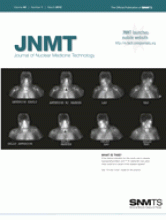Article Figures & Data
Tables
- TABLE 1
Ventilation, Perfusion, and Radiographic Interpretive Criteria for Pulmonary Embolism
PIOPED Modified PIOPED II Perfusion-only modified PIOPED II Perfusion-only PISAPED High LR High LR PE present PE present >2 large mismatched (V:Q) segmental defects* ≥2 large mismatched (V:Q) segmental defects* ≥2 large mismatched (Q:CXR) segmental defects* ≥1 wedge-shaped Q defects Borderline high LR 2 large mismatched (V:Q) segmental defects* Intermediate LR Nondiagnostic Nondiagnostic Nondiagnostic 2 moderate or 1 large mismatched (V:Q) defect*Difficult to categorize as high or low All other findings All other findings Cannot classify as PE-present or PE-absent Borderline low LR 1 matched (V:Q) defect, CXR-negative Low LR Nonsegmental perfusion defects† Q defect substantially < CXR defect Matched (V:Q) defects, CXR-negativeAny number of small Q defects* Normal Very low LR PE absent PE absent No Q defects‖ Nonsegmental†Q defect < CXR lesion1–3 small segmental* defectsSolitary matched (V:Q:CXR) defect (≤1 segment) in mid or upper lungStripe sign‡Solitary large pleural effusion§≥2 matched (V:Q) defects, regionally normal CXR Very low probabilityNonsegmental†Q defect < CXR lesion1–3 small segmental* defectsSolitary matched (Q:CXR) defect (≤1 segment) in mid or upper lungStripe sign‡Solitary large pleural effusion§ Non–wedge-shaped Q defectContour defect caused by enlarged heart, mediastinum, or diaphragmNear-normal QNormal Q Normal No Q defects ↵* Or equivalent where large segmental defect, >75% of segment, equals 1 segmental equivalent; moderate defect, 25%–75% of segment, equals 0.5 segmental equivalent; small defect, <25%, is not counted.
↵† For example, prominent hilum, cardiomegaly, elevated diaphragm, linear atelectasis, or costophrenic angle effusion with no other perfusion defect in either lung and no other radiographic lesion.
↵‡ Peripheral perfusion in a defect (best seen on tangential view).
↵§ Pleural effusion in at least one third of pleural cavity, with no other perfusion defect in either lung.
↵‖ Perfusion defects exactly match shape of CXR.
V:Q = ventilation–perfusion; CXR = chest radiograph; PE = pulmonary embolism; LR = likelihood ratio.
Administered activity Largest radiation dose Effective dose* Radiopharmaceutical MBq mCi Organ mGy/MBq rad/mCi mSv/MBq rem/mCi 99mTc-MAA† 40–150 1.1–4.1 Lung 0.067 0.25 0.011 0.041 99mTc-DTPA‡ 20–40 0.54–1.1 Bladder 0.047 0.17 0.0061 0.023 133Xe§ 200–750 5.4–20 Lung 0.0011 0.0041 0.00071 0.0026 81mKr‖ 40–400 1.1–11 Lung 0.00021 0.00078 0.000027 0.0001 Administered activity Largest radiation dose Effective dose Radiopharmaceutical MBq/kg mCi/kg Organ mGy/MBq rad/mCi mSv/MBq rem/mCi 99mTc MAA* 0.5–2 0.014–0.054 Lung 0.21 0.78 0.038 0.14 99mTc DTPA† 0.4–0.6 0.011–0.016 Bladder 0.12 0.44 0.020 0.074 133Xe‡ 10–12 0.27–0.32 Lung 0.0037 0.014 0.0027 0.010 81mKr§ 0.5–5 0.014–0.14 Lung 0.00068 0.0025 0.000088 0.00033 Fetal dose Stage of gestation mGy/MBq rad/mCi mGy* rad* Early 0.0028 0.010 0.11–0.42 0.011–0.042 3 mo 0.0040 0.015 0.16–0.60 0.016–0.060 6 mo 0.0050 0.018 0.20–0.75 0.020–0.075 9 mo 0.0040 0.015 0.16–0.60 0.016–0.060 ↵* Maternal administered activity, 40–150 MBq (1.1–1.4 mCi).
Data are from Russell et al. (32). No information about possible placental crossover of this compound was available for use in estimating fetal doses.
Fetal dose Stage of gestation mGy/MBq rad/mCi mGy* rad* Early 0.0058 0.021 0.12–0.23 0.012–0.023 3 mo 0.0043 0.016 0.086–0.17 0.0086–0.017 6 mo 0.0023 0.0085 0.046–0.092 0.0046–0.0092 9 mo 0.0030 0.011 0.060–0.12 0.0060–0.012 ↵* Maternal administered activity, 20–40 MBq (0.54–1.1 mCi).
Data are from Russell et al. (32). Information about possible placental crossover of this compound was available and was considered in estimates of fetal doses.
Fetal dose Stage of gestation mGy/MBq rad/mCi mGy* rad* Early 0.00025 0.00092 0.050–0.19 0.0050–0.019 3 mo 0.000029 0.00011 0.0058–0.022 0.00058–0.0022 6 mo 0.000021 0.000078 0.0042–0.016 0.00042–0.0016 9 mo 0.000016 0.000059 0.0032–0.01 0.00032–0.0012 ↵* Maternal administered activity, 200–750 MBq (5.4–20 mCi).
Data are from Russell et al. (32). No information about possible placental crossover of this compound was available for use in estimating fetal doses.
Fetal dose Stage of gestation mGy/MBq rad/mCi mGy* rad* Early 1.8 × 10−7 6.7 × 10−7 7.2 × 10−6 to 7.2 × 10−5 7.2 × 10−5 to 7.2 × 10−6 3 mo 1.8 × 10−7 6.7 × 10−7 7.2 × 10−6 to 7.2 × 10−5 7.2 × 10−5 to 7.2 × 10−6 6 mo 2.8 × 10−7 1.0 × 10−6 1.1 × 10−5 to 1.1 × 10−4 1.1 × 10−6 to 1.1 × 10−5 9 mo 3.4 × 10−7 1.3 × 10−6 1.4 × 10−5 to 1.4 × 10−4 1.4 × 10−6 to 1.4 × 10−5 ↵* Maternal administered activity, 40–400 MBq (1.1–11 mCi).
Dose estimates to the fetus were not provided by Russell et al. (32) but were estimated using kinetic data in ICRP 53. No information about possible placental crossover of this compound was available for use in estimating fetal doses.







